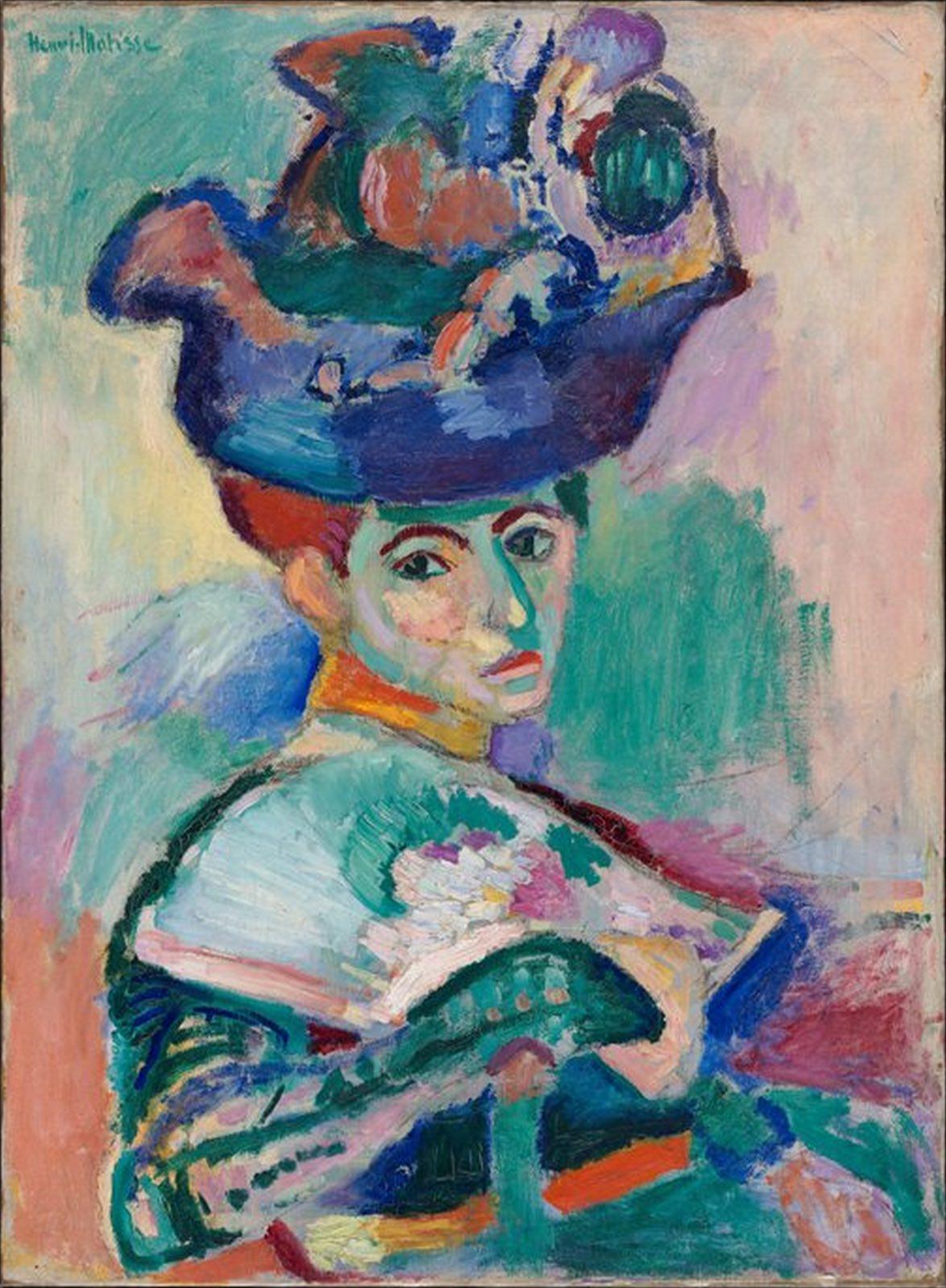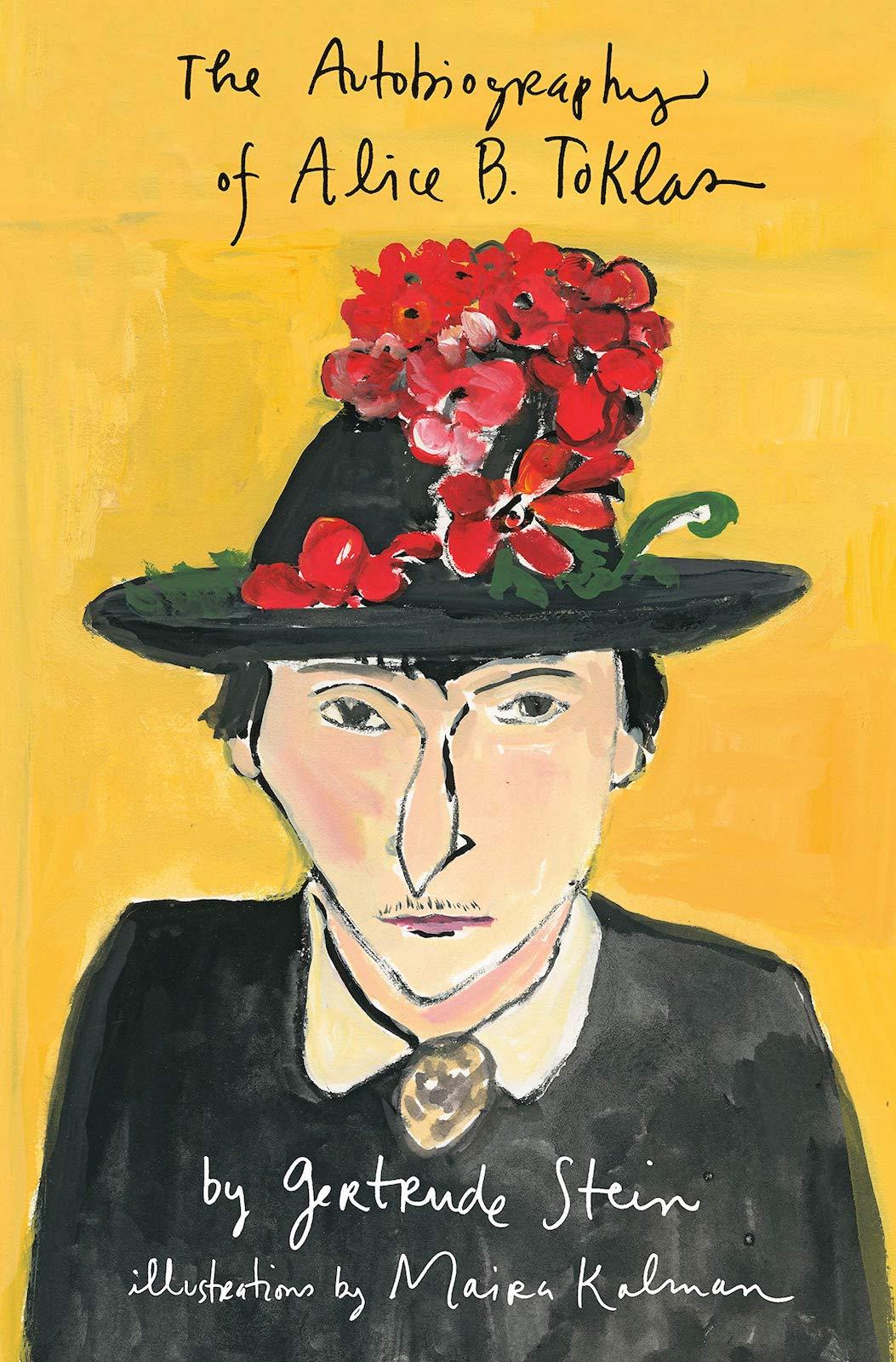Stein additionally joined Leo, their older brother Michael, and his wife Sarah in collecting art. Part of the Bohemian set, the Steins bought affordable pieces from their friends—emerging Impressionists and Modernists—and quickly developed a reputation for their ability to recognize soon-to-be-famous artists. Michael and Sarah were lifelong friends of Matisse, whose popularity they helped establish.
Wide World Photos, detail of Gertrude Stein sitting on a sofa in her Paris studio, with a portrait of her by Pablo Picasso, and other modern art paintings hanging on the wall behind her, May 1930. Gelatin silver. 10 x 8 in. (25.5 x 20.4 cm).
Noted iconoclastic Jewish-American poet, playwright, novelist, and art collector Gertrude Stein (1874–1946) is remembered for her experimental use of language, her frank depiction of lesbian relationships in fiction, and for amassing an exceptional art collection while living in Paris as something of a celebrity figure. Following two older siblings, Stein moved to Paris in 1903, where she shared a tiny apartment on 27 rue de Fleurus with her brother Leo.

Henri Matisse, Woman with a Hat (Femme au chapeau), 1905. Oil on canvas. San Francisco Museum of Modern Art.
Art dealers recognized Leo’s eye for genius, and Stein, with her popular Saturday night salons, became a fixture in the Parisian intelligentsia scene, while her friendship with Picasso became legendary. Stein’s salons were cultural hotspots that attracted artists, art collectors, critics, fans, and many “Lost Generation” literary greats, including Hemmingway and Fitzgerald.
She and Leo created a floor-to-ceiling gallery space (reminiscent of the classic French art salons) accented with Renaissance furniture for their now famous collection. It included Renoir, Cézanne, Matisse, Picasso, and other future greats, until the artists’ growing popularity made their work too expensive for new purchases.
Things fractured when Stein’s life partner Alice B. Toklas moved in with them in 1910. Leo’s dislike of Toklas, combined with his differing tastes in art—Leo was not a fan of Cubism and disliked his sister’s new Cubistic literary style—caused a family feud.
Leo moved out in 1913, necessitating the division of their collection. Leo took all of their Renoirs and the Renaissance furniture, while Stein got most of the Picassos. Overall, the division was fairly equitable, though they did argue over a painting of five apples by Cézanne. Picasso painted Pomme as a replacement gift for his friend; there is still a handwritten note on the painting's back reading, "Souvenir pour Gertrude et Alice. Picasso. Noel 1914."

The cover for an illustrated run of Gertrude Stein’s 1933 piece, The Autobiography of Alice B. Toklas. Published in 2020 by Penguine Press.
In 1933 Stein’s quasi-biographical memoir, The Autobiography of Alice B. Toklas, became a bestseller. Her depictions of the revolutionary Parisian art and culture scene helped popularize Impressionism, Modernism, and Cubism. Her often unflattering descriptions and largely unfounded opinions created hard feelings among the writers and artists she’d mentored and even destroyed some friendships.
The Stein family’s collections were further impacted by war. Pieces were lost during the chaos of WWI, and, while the family was somewhat protected during WWII by Stein’s celebrity and her friendship with powerful Vichy government official Bernard Faÿ, they ultimately had to relocate to the country and sell paintings to survive. Toklas also sold art after her partner's death to help cover posthumous publication costs for Stein's later work.
Most of the family's collections, which included hundreds of paintings, were brought together again for an exhibition at the San Francisco Museum of Modern Art in 2011. Various parts of Gertrude Stein’s personal forty-seven-piece collection, which was sold by the family in 1968, are held in museums and private collections around the world.




























